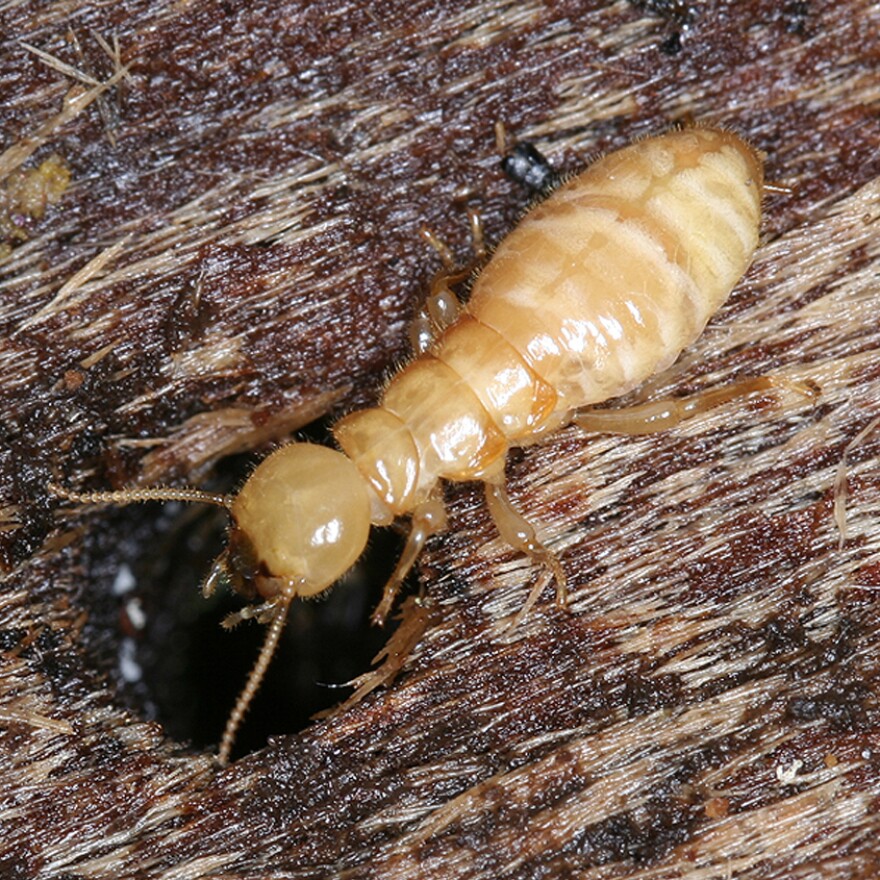What's for dinner on World Food Day?
How about a humble meal of dried termites stirred into a sukuma wiki stew? With a side of sorghum couscous?
World Food Day was invented by the United Nations in 1979 and first celebrated the next year. One goal is to promote underutilized, highly nutritious foods for the 800 million people in lower-income countries who can't easily prepare balanced meals.
We asked Action Against Hunger, a nonprofit group, to cook up a list of foods that could make a big nutritional difference — and yes, the list includes termites.

Termites, Three Ways
The same bug that could destroy the wood in your home is a highly nutritious food: 35 percent protein and a good source of calcium, iron and zinc. Termites can be dried like beef jerky and then later added into any meal for a protein boost. These bugs are typically harvested from the mounds they construct and live in, says Muriel Calo, a researcher at Action Against Hunger.
If you don't want to take time to dry them, just toss them in a frying pan. They're really easy to cook: Termites fry in their own fat. Daniella Martin, author of Edible: An Adventure into the World of Eating Insects and the Last Great Hope to Save the Planet, also recommends tossing them with olive oil, crushed garlic and salt before baking them at 350 degrees for 10-15 minutes.

Dip Into Green Gram
Green gram, also known as mung bean, is a high-protein legume that is native to India and is now grown across East Africa and Southeast Asia. The beans can be boiled in water until they are soft and then either pureed into a hummus-like dip or eaten as is. They can grow almost anywhere there's a bit of soil.
Sometimes You Feel Like A Groundnut
This root legume resembles its relative the peanut. The powerhouse groundnut is such a good source of nutrients that it's often turned into Plumpy'Nut, a nutrient-dense paste given to children suffering from malnutrition. But the high demand for this crop also means that many farmers who grow groundnuts are tempted to sell the harvest rather than eat it themselves.
Calo hopes that the more farmers and their families understand the value of these legumes as part of a balanced diet, the more likely they will be to eat them themselves. In Haiti, groundnuts are turned into a butter similar to American peanut butter, with a twist. The nuts are grilled and then ground in a traditional grinder, says Stephanie Armand, author of A Taste for Haiti, a traditional Haitian cookbook. The paste is mixed with salt and hot pepper.
Or you can just roast 'em and eat 'em.

Sukuma Wiki, aka Collard Greens
That's the Swahili phrase for collard greens, which are packed with iron, calcium, protein and all sorts of vitamins and minerals.
But that's only part of the reason the greens are a staple dish in parts of Kenya and other East African countries. The literal translation of sukuma wiki is "stretch through the week" — a fitting description for a crop that's great for feeding families on a tight budget. In Africa's tropical heat, these leafy greens can grow 3 to 4 feet tall year-round. And families and farmers can periodically pick the leaves throughout the year without harming the plant. The greens are often stewed and served alongside porridge, but for households with some extra ingredients in the kitchen, they can be sauteed with onions, tomatoes and even meat and fish.

Sorghum And Millet Can Make The Cake (And The Couscous)
Sorghum, an ancient grain that originated in Northeastern Africa, is mostly used for animal feed and ethanol production in the U.S. But throughout Africa and in parts of Asia and South America, sorghum (pictured, left), and its cousin millet commonly make filling and nutritious meals.
Sorghum and millet can thrive where "other more water-hungry crops cannot grow," says Tim Dalton, an agricultural economist at Kansas State University. So unlike corn, sorghum and millet can withstand the tropical heat and won't die if there's a drought.
The grains are often eaten as porridge or ground into flour to make bread and cakes. Sometimes water is added to the flour, which is then shaped into balls and steamed. Voila: sorghum and/or millet couscous!
Not only are the grains rich in complex carbs, iron and vitamin B, but they also have a low glycemic index. "They digest slower, so they are good if you are living in a developing country where you're doing a lot of manual labor," says Dalton.
He adds that it's not only good for people in lower-income countries, but also people right here in the U.S. In fact, he says, sorghum and millet could well become the next quinoa. For those looking for a new grain to try, there are lots of recipes to start with, including some by celebrity chef and sorghum enthusiast Marc Forgione.
Copyright 2021 NPR. To see more, visit https://www.npr.org.




